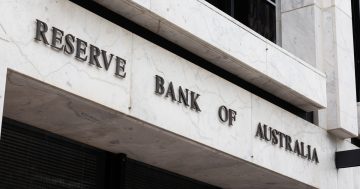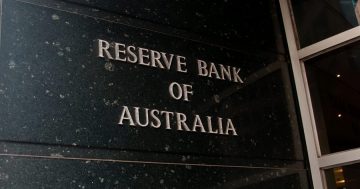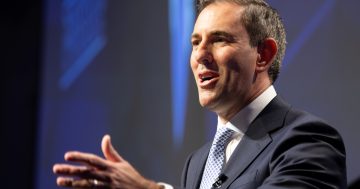David Taylor* says it might be time to start paying attention to the US bond market, as its rise is likely to impact interest rates on many Australian mortgages.

Photo: Pogonici
If you’re like most Australians, you’ve probably been blissfully unaware of the recent movements in the US bond market.
But it may be time to start paying attention.
That’s because the interest rate for those 10-year US Treasury bonds is a bellwether for where commercial interest rates are heading, including in Australia, and it’s now comfortably above 3 per cent for the first time in roughly a decade.
If it continues to climb, interest rates on many Australian mortgages are likely to rise too.
“So it’s almost taking us all the way back to where we were in 2007, before the Global Financial Crisis, so it’s a bit of a marker,” UBS Australia’s head of fixed income, Anne Anderson told RN Breakfast.
Perfect storm brewing for rising rates
There are a couple of forces pushing up the 10-year US Government bond yield.
Bonds are being sold to fund the US Government’s growing budget deficit — forcing rates higher.
The rising price of oil is also fuelling speculation inflation is about to take off globally and is adding to the Federal Reserve’s case to keep lifting official US interest rates.
“We started this year and market expectation was for two hikes from the Fed,” AMP Capital’s Chief Economist, Shane Oliver said.
“Now the market is moving towards four hikes from the Fed, pushing US interest rates up quite substantially from where they were a few years ago around zero and, of course, pushing US interest rates quite substantially higher relative to Australian interest rates.”
Analysts at investment bank Macquarie are tipping the US 10-year Treasury yield — a global benchmark for long-term borrowing costs, including here in Australia — could hit 4 per cent by next year.
Wall Street trader Stephen Guilfoyle said Macquarie’s forecast is on the money, but he wants to see the interest rate push higher still from where it is now.
“I’m certainly not afraid of it yet,” Mr Guilfoyle said.
“3.5 per cent is where I’ll take notice.”
More broadly though, Mr Guilfoyle said growth, inflation and interest rates are now officially back on the move.
“As long as economic growth in the US outruns this, and inflation expectations stay ahead of this, interest rates should rise when an economy is starting to do better — which our economy does seem to be doing better,” he said.
Rising US rates driving Australian rates higher
The rise in US borrowing costs has been reflected in Australian financial markets, too, with the yield on the local benchmark 10-year bond rising above 2.9 per cent.
Westpac economist Justin Smirk warns that, in the months and years ahead, it’s simply going to cost more for Australian banks to source funds for mortgages, which ultimately means higher borrowing costs for home buyers.
“So, for us, funding in the market now, what we’re seeing is the premium we have to pay to raise money offshore rising and then this puts pressure on our cost of funds,” Mr Smirk said.
“Our funding generally tends to be less than a year so the impact generally comes through somewhere between three and six months.”
UBS’s Anne Anderson supports the view that mortgage rates are heading higher, but makes the point that fixed-interest loans are the ones in the firing line.
“This is why the market and myself don’t believe that the central bank in Australia will be tightening policy anytime soon,” she said.
“Even though the Fed is on its merry path of tightening, the Reserve Bank has being quite specific that the things that they care about is inflation and employment and so they are setting policy for the Australian economy.”
AMP Capital’s Shane Oliver agrees, saying the Reserve Bank is unlikely to raise the cash rate for the next couple of years.
“I don’t think the Australian economy is ready for higher interest rates here, [at least] not initiated by the Reserve Bank and we have seen the Reserve Bank go in different directions to the Fed in recent years,” he said.
“The Fed started raising interest rates of course in 2015 — we were still cutting interest rates in fact through 2016.”
“So, despite the Fed raising rates, we’ve been doing something very different and our economy, I think, is a lot weaker than US.”
“They’ve got unemployment at 3.9 [per cent], we’ve got unemployment at 5.6 per cent.”
“They got underemployment at 3.9 per cent, whereas we’ve got underemployment at 8.5 per cent.”
“They’re seeing stronger wages growth, we’re not.”
“Therefore I think that the Reserve Bank will continue to lag the Fed and I don’t see the Reserve raising interest rates until 2020 at the earliest.”
Emerging markets vulnerable to US ‘bondcano’
But the fallout from the rising US 10-year Treasury bond yield is global.
Ms Anderson argued it has led to major stock market falls throughout emerging economies, as those countries struggle with the prospect of higher borrowing costs.
Combine that, she said, with a rising US dollar, and a number of geopolitical concerns — such as talk of a trade war between the US and China — and it is enough to make some of the world’s bravest money managers a little nervy.
“What’s going on in emerging markets is a little bit concerning — a combination of the rise in the US dollar, now a rise in bond yields, which looks like it may have further to go, and then of course political instability that we’ve seen emerge,” Ms Anderson said.
Fed fund futures — a predictor of future moves by the US central bank — are now pricing in a better than even chance of three more US interest rate rises this year, for a total of four in 2018.
* David Taylor is Radio National’s business reporter. He tweets at @DavidTaylorABC.
This article first appeared at www.abc.net.au.










